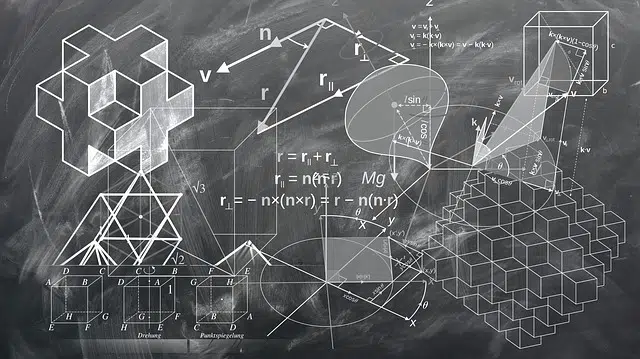
The portions of a plane that are delimited by some of its lines are called semiplanes.
The concept of semiplane is used in the field of geometry to refer to the portions of a plane that are delimited by any of its lines. It should be noted that each straight line divides the plane into two portions (that is, into two semiplanes).
To understand what a half-plane is, it is essential to understand the notion of a plane . It can be said that a plane is an ideal geometric object that houses an infinite number of lines and points and that has only two dimensions. The plane , the line and the point are the essential concepts of the specialty of mathematics that we know as geometry.
The planes, therefore, are divided into semiplanes by the straight lines that cross them. Each of the lines, in this way, generates two half-planes in the plane . These half-planes, of course, do not necessarily have the same dimensions.
The semiplanes and the laws of geometry
The laws of geometry indicate that in each pair of semiplanes created by a line x there are an infinite number of points . Every point belonging to the plane in question, on the other hand, belongs to one of the two half-planes determined by the line or to the line itself.
Two points contained in the same half-plane, in addition, form a segment that does not intersect the line x , while two points contained in different half-planes create a segment that does intersect the line x .

Demiplanes are studied in school.
Classification according to type
In the same way, we cannot forget that there are two fundamental types of semiplanes:
– Open half-plane , which is one in which the intersection is the common edge line. That is, it does not contain the line that delimits it.
– Closed half plane . Under this name is the semi-plane which, unlike the previous one, does contain the aforementioned line in charge of delimiting it.
So:
If half-plane 1 contains point P and half-plane 2 contains point S , segment PS will cut line X. On the other hand, if halfplane 1 has points P and W , the segment PW will not cut the line.
Other characteristics of the demiplanes
Likewise, there are other interesting data that are worth knowing about this element at hand, such as the following:
-Every point on a plane belongs to the division line or to one of the two aforementioned semiplanes.
-Any segment that is determined by what are two points of the same semiplane does not cut what is the so-called division line. On the contrary, any segment that is determined by what are two points of the different half-planes does proceed to cut the aforementioned division line.
A contribution from Poincaré
In addition to all of the above, we cannot ignore the existence of different types of semiplanes that have become fundamental elements of geometry. This would be the case, for example, of the so-called Poincaré half-plane or superior Poincaré half-plane, which was discovered by the mathematician after whom it is named.
Basically under that name there is a semiplane model that is the fundamental axis of hyperbolic geometry and is known as the superior semiplane. It has the peculiarity that it takes the upper part of what is the Cartesian plane but without “taking” what is the x axis.
